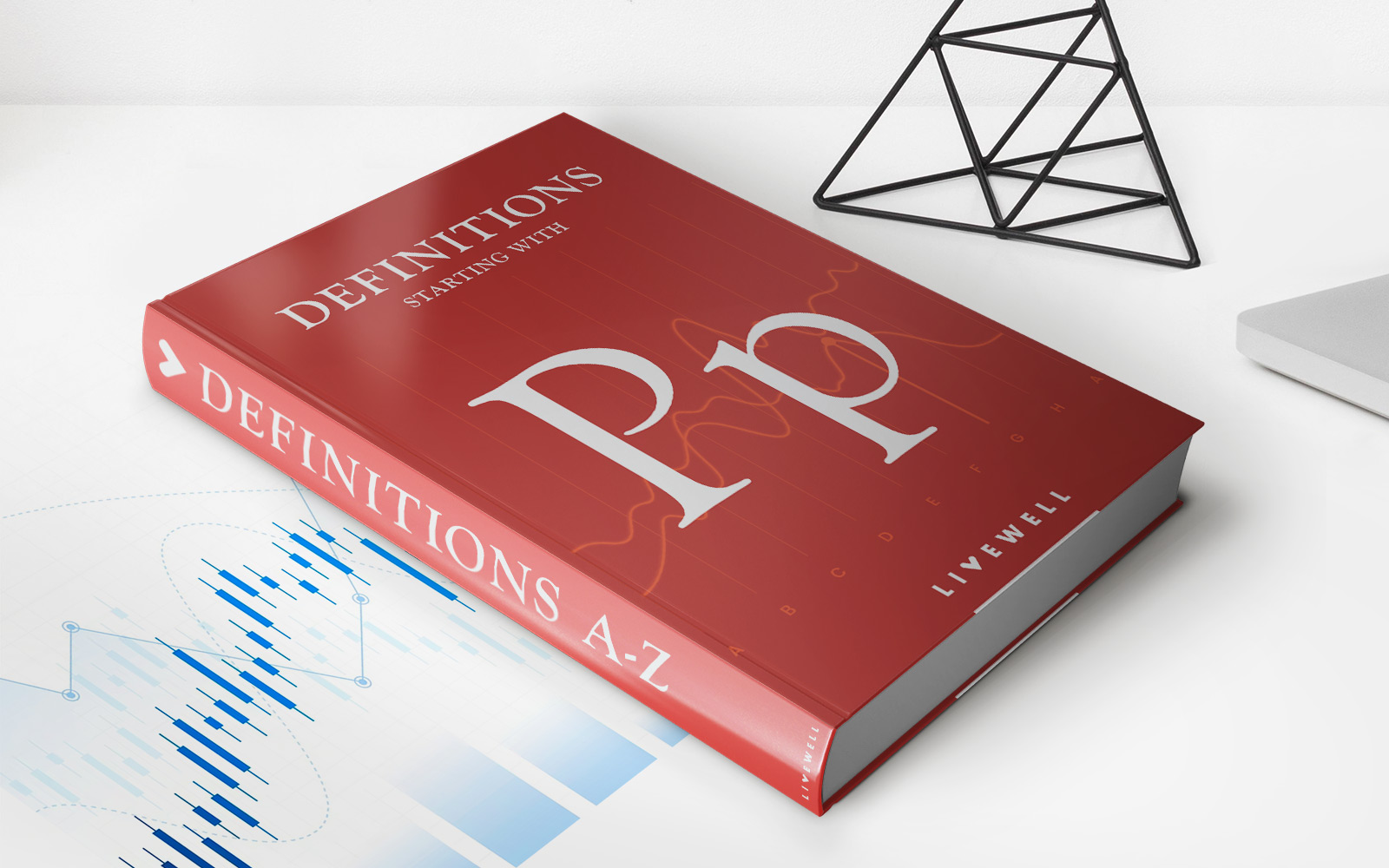

Finance
Who Takes Principal Vision Insurance?
Published: November 11, 2023
Looking for vision insurance? Find out who takes Principal vision insurance and get the coverage you need for your financial wellbeing.
(Many of the links in this article redirect to a specific reviewed product. Your purchase of these products through affiliate links helps to generate commission for LiveWell, at no extra cost. Learn more)
Table of Contents
Introduction
When it comes to taking care of our health, we often tend to focus on our physical well-being, but we may forget about the importance of maintaining good eye health. Regular eye examinations and proper vision care are essential for maintaining optimal vision and detecting any potential eye-related issues or diseases.
This is where vision insurance plays a crucial role. Vision insurance helps cover the costs associated with routine eye exams, prescription glasses, contact lenses, and even certain eye surgeries. Principal Vision Insurance is one such provider that offers comprehensive coverage to help individuals take care of their eye health without breaking the bank.
Principal Financial Group, a leading global financial institution, offers a wide range of insurance products and services, including Principal Vision Insurance. Whether you have perfect vision or require corrective lenses, Principal Vision Insurance aims to provide affordable options that meet your unique vision needs.
In this article, we will delve into the details of Principal Vision Insurance and explore the benefits it offers, eligibility requirements, the enrollment process, network providers, the claim process, and the cost and premiums associated with the coverage. By understanding how Principal Vision Insurance works, you can make an informed decision when it comes to your eye health and ensure that you have the necessary coverage in place.
Overview of Principal Vision Insurance
Principal Vision Insurance provides individuals and their families with access to comprehensive vision care services and coverage. As a part of Principal Financial Group, a trusted name in the financial and insurance industry, Principal Vision Insurance aims to offer affordable and high-quality vision care options to its members.
With Principal Vision Insurance, you can expect an extensive network of eye care providers, including optometrists, ophthalmologists, and retail optical locations. This ensures that you have easy access to the care you need, whether it’s a routine eye exam or a specialized procedure.
The coverage provided by Principal Vision Insurance includes a range of services, such as annual eye exams, prescription eyeglasses, contact lenses, and even discounts on LASIK surgery. Depending on the specific plan you choose, you may also have coverage for additional services like lens enhancements or frames from popular brands.
One of the major advantages of Principal Vision Insurance is the flexibility it offers. You can select from various plan options based on your needs and budget. Whether you are an individual looking for coverage or a family that requires comprehensive vision care, Principal Vision Insurance has options to suit different situations.
Furthermore, Principal Vision Insurance provides nationwide coverage, allowing you to access eye care services across the country. This is particularly beneficial for individuals who travel frequently or those who have family members residing in different states.
Overall, Principal Vision Insurance aims to deliver excellent vision care while keeping costs affordable for its members. By offering a wide range of services, a robust network of providers, and flexibility in plan options, Principal Vision Insurance ensures that individuals and families can prioritize their eye health without financial strain.
Coverage and Benefits
Principal Vision Insurance offers comprehensive coverage for various vision care services. The specific benefits you receive will depend on the plan you choose, but here are some common coverage options and benefits:
- 1. Annual Eye Exams: Principal Vision Insurance covers annual routine eye examinations, typically including tests for visual acuity, eye health evaluation, and screenings for common vision problems.
- 2. Prescription Eyeglasses: If you require corrective lenses, Principal Vision Insurance provides coverage for prescription eyeglasses. This includes the cost of the lenses and frames, and you may have the option to choose from a wide range of frame styles.
- 3. Contact Lenses: If you prefer contact lenses, Principal Vision Insurance offers coverage for both soft and rigid gas-permeable lenses. This includes the cost of the contact lenses themselves and may also cover contact lens fittings.
- 4. LASIK Surgery: Principal Vision Insurance may provide discounts on LASIK surgery, a popular corrective eye surgery option that can reduce or eliminate the need for glasses or contact lenses.
- 5. Lens Enhancements: Depending on your plan, Principal Vision Insurance may offer coverage for lens enhancements, such as progressive lenses, anti-glare coatings, and scratch-resistant coatings.
- 6. Additional Benefits: Some Principal Vision Insurance plans may include additional benefits like coverage for prescription sunglasses, specialty lenses, or discounts on non-prescription sunglasses.
It’s important to note that each plan may have its own coverage limits, copayments, and deductibles. Additionally, certain services may have specific waiting periods before coverage begins. Be sure to review the details of your chosen plan to fully understand the coverage and benefits it offers.
By availing the coverage and benefits provided by Principal Vision Insurance, you can ensure that your vision care needs are taken care of, making it more affordable to maintain optimal eye health and enjoy clear, comfortable vision.
Eligibility Requirements
To be eligible for Principal Vision Insurance, you typically need to meet certain criteria. While eligibility requirements may vary depending on the specific plan and location, here are some common factors to consider:
- 1. Membership: Principal Vision Insurance is available to individuals and families who are members of Principal Financial Group. This may require being a participant in an employer-sponsored retirement plan or having a specific financial or insurance product with Principal Financial Group.
- 2. Age: Principal Vision Insurance typically covers individuals of all ages, including children. However, specific age restrictions or requirements may vary based on the plan you choose.
- 3. Relationship to the Primary Member: Family coverage options are available through Principal Vision Insurance. Eligible dependents may include a spouse, domestic partner, and dependent children. Some plans may also provide coverage for other family members, such as parents or in-laws.
- 4. Residential Location: The availability of Principal Vision Insurance may vary based on your residential location. It’s important to check if this insurance is offered in your state or region.
- 5. Enrollment Period: Principal Vision Insurance may have specific enrollment periods during which you can sign up for coverage. These periods are usually tied to certain life events, such as starting a new job or experiencing a qualifying event like marriage or the birth of a child.
It’s essential to review the eligibility requirements for Principal Vision Insurance carefully and consult with your employer or insurance provider to ensure that you meet the necessary criteria. Additionally, any spouse or dependent added to your plan should also meet the eligibility requirements to be covered under the policy.
By understanding the eligibility requirements, you can determine if Principal Vision Insurance is a suitable option for you and your family’s vision care needs and take the necessary steps to enroll in the coverage. Prioritize your eye health and make an informed decision to ensure peace of mind and access to quality vision care services.
Enrollment Process
Enrolling in Principal Vision Insurance is a relatively straightforward process. Here are the general steps to follow to enroll in the coverage:
- 1. Check Eligibility: Determine if you are eligible for Principal Vision Insurance based on the criteria mentioned in the eligibility section. Ensure that you meet the requirements before proceeding with enrollment.
- 2. Employer-Sponsored Plans: If you are enrolling through an employer-sponsored plan, consult your employer’s HR department or benefits administrator for the specific enrollment process. They will provide you with the necessary information, enrollment forms, and deadlines.
- 3. Individual Plans: If you are enrolling in Principal Vision Insurance as an individual, you can visit the Principal Financial Group website or contact their customer service to get details about available plans and the enrollment process.
- 4. Plan Selection: Evaluate the different plan options offered by Principal Vision Insurance. Consider factors such as coverage, premiums, and deductibles to select a plan that best suits your vision care needs and budget.
- 5. Complete Enrollment Form: Fill out the enrollment form accurately and provide all required information, including personal details, dependent information, and any other necessary documentation.
- 6. Review and Submit: Before submitting your enrollment form, carefully review all the information provided. Ensure that there are no errors or omissions that could delay or impact your coverage.
- 7. Pay Premiums: Depending on the plan you choose, you may be required to pay premiums for Principal Vision Insurance. Follow the instructions provided to make your premium payments promptly to activate your coverage.
It’s important to note that enrollment periods may vary, so be sure to check the specific enrollment deadlines and any limitations outlined by your employer or insurance provider. Late enrollment or missed deadlines may result in a delay in coverage or the need to wait for the next enrollment period.
By following these steps and completing the enrollment process correctly, you can secure your Principal Vision Insurance coverage and gain access to the benefits it offers. Remember to keep a copy of your enrollment form and any other relevant documentation for future reference.
Network Providers
Principal Vision Insurance has established a robust network of eye care providers to ensure that their members have convenient access to quality vision care services. The network includes a wide range of optometrists, ophthalmologists, and retail optical locations across the country.
When you enroll in Principal Vision Insurance, you can visit any network provider to receive covered services. Network providers are professionals who have contracted with Principal Vision Insurance to deliver services at discounted rates to members. By choosing an in-network provider, you can maximize your benefits and minimize out-of-pocket expenses.
To find a network provider near you, Principal Vision Insurance provides several resources. These may include an online directory on their website or a customer service helpline that can provide you with information about network providers in your area.
When selecting a network provider, it’s important to consider factors such as the provider’s proximity to your location, their reputation, and the services they offer. Some network providers may specialize in certain areas, such as pediatric eye care or advanced vision therapies, so it’s beneficial to choose a provider that aligns with your specific needs.
If you have an existing eye care provider that you prefer to see, you can check if they are in-network with Principal Vision Insurance. If they are not a part of the network, you may still be able to receive out-of-network benefits, although the coverage may be different, and you may have higher out-of-pocket costs.
Remember to review the network provider guidelines and requirements outlined by Principal Vision Insurance. These guidelines may specify any pre-authorization requirements or limitations on certain services. It’s best to familiarize yourself with the network provider policies to ensure seamless and comprehensive coverage.
By utilizing the network of providers associated with Principal Vision Insurance, you can have peace of mind knowing that you have access to trusted and qualified professionals who can address your vision care needs effectively and efficiently.
Claim Process
Filing a claim with Principal Vision Insurance is a simple and straightforward process. When you receive vision care services from an in-network provider, they will typically handle the claims process on your behalf. However, it’s always recommended to familiarize yourself with the claim process to ensure a smooth experience. Here are the general steps involved:
- 1. Visit an In-Network Provider: Seek vision care services from a network provider affiliated with Principal Vision Insurance. This ensures that the provider can directly submit the claim to the insurance company on your behalf.
- 2. Submitting the Claim: The network provider will gather all the necessary information and documentation related to your visit, including the services rendered and any associated costs. They will submit the claim to Principal Vision Insurance electronically or via a paper form.
- 3. Claim Processing: Once Principal Vision Insurance receives the claim, they will review it to ensure that the services are covered based on your policy. They may also check for any deductibles, copayments, or coinsurance amounts that apply.
- 4. Adjudication: If the claim is approved, Principal Vision Insurance will process the payment to the network provider for the covered services. You will receive an Explanation of Benefits (EOB) statement outlining the details of the claim, the amount paid, and any remaining patient responsibility.
- 5. Patient Responsibility: If there are any copayments, deductibles, or coinsurance amounts applicable to the services received, you will be responsible for paying these directly to the network provider. The EOB statement will provide information on how to make these payments.
- 6. Follow-Up: It’s a good practice to review the EOB statement and verify that the claim has been processed correctly. If you have any questions or concerns, contact Principal Vision Insurance’s customer service department for assistance.
It’s important to note that if you receive services from an out-of-network provider, you may need to pay for the services upfront and submit a claim for reimbursement. In this case, you would need to gather the necessary documentation, including itemized receipts and claim forms, and submit them directly to Principal Vision Insurance for processing.
By understanding the claim process and working with network providers, you can streamline the reimbursement process and ensure that you receive the benefits and coverage you are entitled to under Principal Vision Insurance.
Cost and Premiums
When considering Principal Vision Insurance, it’s important to understand the cost and premium structure associated with the coverage. The specific costs may vary depending on factors such as the plan you choose, your location, and your enrollment status (individual or family). Here’s an overview of the typical cost considerations:
- 1. Premiums: Premiums are the regular payments you will need to make to maintain your Principal Vision Insurance coverage. The amount of the premium will depend on the plan you select and whether you are enrolled as an individual or as part of a family plan. Premiums are typically paid on a monthly or annual basis.
- 2. Copayments: Depending on your plan, you may be required to make copayments for certain services, such as office visits or eyeglasses. Copayments are fixed amounts that you pay out-of-pocket at the time of service.
- 3. Deductibles: Some plans may include a deductible, which is the amount you must pay out-of-pocket before your insurance coverage kicks in. Once you meet your deductible, your insurance will cover a portion or all of the eligible costs, depending on your plan.
- 4. Coinsurance: Coinsurance is the percentage of the cost of covered services that you are responsible for paying after meeting your deductible. For example, if your coinsurance is 20%, you would pay 20% of the covered expenses, and your insurance would cover the remaining 80%.
- 5. Out-of-Network Costs: If you receive services from an out-of-network provider, you may have higher out-of-pocket costs. This can include higher deductibles, higher copayments, and a greater share of the total cost of services.
It’s important to carefully review the details of your chosen plan to understand the specific costs and coverage details. By doing so, you can budget for these expenses and make informed decisions about your vision care.
Additionally, consider the long-term cost savings that Principal Vision Insurance can provide. By having insurance coverage, you have access to discounted rates for services and materials, such as eyeglasses or contact lenses. This can result in significant savings over time, making it more affordable to maintain your eye health.
Remember to evaluate the cost and premium structure alongside the coverage and benefits provided by Principal Vision Insurance. Balancing the cost considerations with the level of coverage and the reputation of the insurance provider will help you make a well-informed decision that meets your vision care needs and financial circumstances.
Comparison with Other Vision Insurance Providers
When considering vision insurance options, it’s valuable to compare Principal Vision Insurance with other providers to determine which one best meets your needs. Here are some key points of comparison to consider:
- 1. Coverage and Benefits: Compare the coverage and benefits offered by various vision insurance providers. Look for features such as coverage for routine eye exams, prescription eyewear, contact lenses, and any additional services that are important to you.
- 2. Network of Providers: Assess the network of providers associated with each insurance provider. Check if they have a wide range of optometrists, ophthalmologists, and retail optical locations in your area, ensuring convenient access to eye care services.
- 3. Cost and Premiums: Compare the cost and premium structures of different vision insurance providers. Look into monthly or annual premiums, copayments, deductibles, and coinsurance percentages to assess which option offers the most affordable coverage for your budget.
- 4. Flexibility and Customization: Consider the flexibility and customization options offered by each provider. Look for the ability to choose from different plans or add-ons based on your specific vision care needs and preferences.
- 5. Customer Service and Support: Evaluate the level of customer service and support provided by different insurance providers. This can include factors such as the availability of customer service helpline, online resources, and responsiveness to inquiries or claims.
- 6. Reputation and Financial Stability: Research the reputation and financial stability of the insurance providers you are considering. Look for customer reviews and ratings, as well as their financial strength ratings from independent rating agencies, to ensure you are choosing a reliable and trustworthy provider.
By comparing these factors, you can make an informed decision about which vision insurance provider aligns best with your needs and preferences. Remember that everyone’s vision care needs are different, so what works for one person may not be the best fit for another. It’s important to assess your individual requirements and priorities when making the comparison.
Keep in mind that Principal Vision Insurance, with its comprehensive coverage options, a wide network of providers, and the backing of Principal Financial Group, has established itself as a reputable choice in the vision insurance market. By conducting thorough research and comparing options, you can determine if Principal Vision Insurance is the right fit for you or if there is another provider that better suits your vision care needs.
Conclusion
In conclusion, Principal Vision Insurance offers a comprehensive and affordable solution for individuals and families seeking quality vision care coverage. With a network of trusted eye care providers, Principal Vision Insurance ensures convenient access to a wide range of services, including routine eye exams, prescription eyewear, contact lenses, and even discounts on LASIK surgery.
The coverage and benefits provided by Principal Vision Insurance can help you take care of your eye health without incurring substantial out-of-pocket expenses. The flexibility and customization options allow you to choose a plan that aligns with your specific vision care needs and budget.
The enrollment process for Principal Vision Insurance is straightforward, and their customer service team is available to assist you with any questions or concerns you may have. By understanding the eligibility requirements and following the enrollment process correctly, you can secure your coverage and gain peace of mind.
When comparing Principal Vision Insurance with other providers, consider factors such as coverage, network of providers, costs, and customer support. Assessing these aspects will help you determine which vision insurance provider best suits your individual needs and preferences.
Remember that prioritizing your eye health is essential for maintaining clear vision and detecting potential eye problems. Having a vision insurance plan like Principal Vision Insurance provides you with the financial support and access to services needed to keep your eyes healthy and well cared for.
Ultimately, whether you choose Principal Vision Insurance or another provider, participating in a vision insurance plan is a proactive step towards maintaining optimal eye health and ensuring that you receive the necessary care and treatment when needed.














